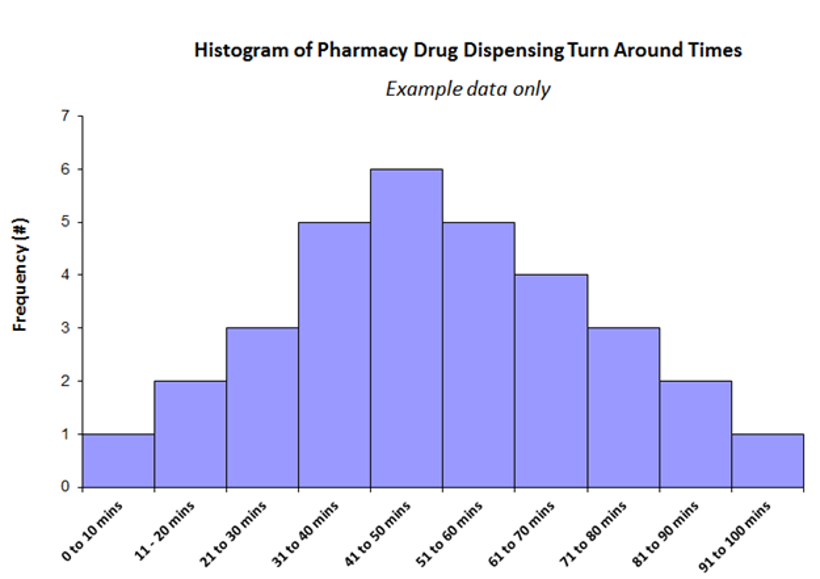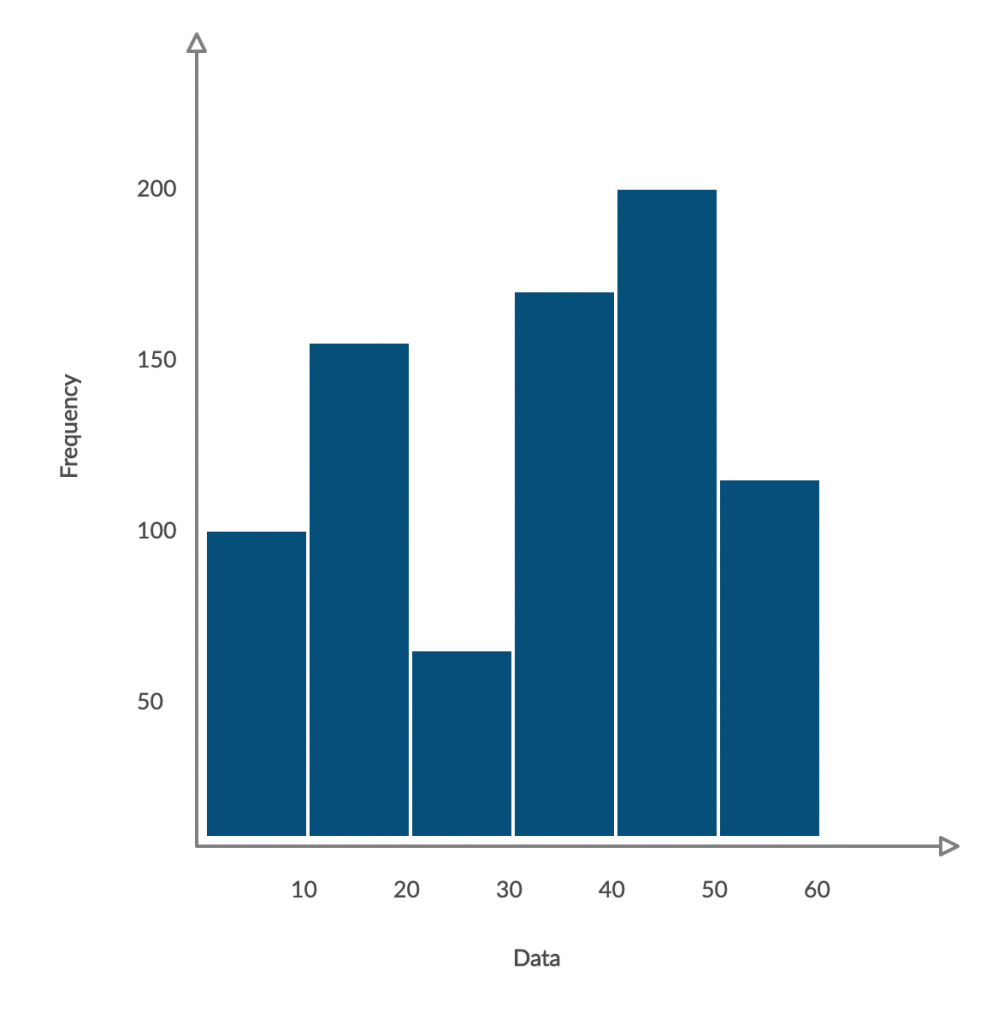Based on effecting most categories we select processes to improve. Histograms are sometimes confused with bar charts.
 Histogram Clinical Excellence Commission
Histogram Clinical Excellence Commission
A Histogram is a vertical bar chart that depicts the distribution of a set of data.

What is histogram used for by improvement teams. The Y axis is the frequency for that measurement. Quality tools can serve many purposes in problem solving. A histogram is a graphical display of data using bars of different heights.
Knowing how to translate histograms is an important tool in project management and project managers should use it to analyze their data. Contrast is defined as the difference in intensity between two objects in an image. A histogram is used for continuous data where the bins represent ranges of data while a bar chart is a plot of categorical variables.
These ranges of values are called classes or bins. The photo to the right shows data from a call center- specifically the time to answer an incoming call. And you decide what ranges to use.
Before creating a histogram be sure to read this discussion on data analysis. A histogram is a type of graph that has wide applications in statistics. They may be used to assist in decision making selecting quality improvement projects and in performing root cause analysis.
Histogram Quality Service Improvement and Redesign Tools. It is similar to a vertical bar graph. Histograms provide a visual interpretation of numerical data by indicating the number of data points that lie within a range of values.
Continuous data is part of six sigma. In a histogram each bar groups numbers into ranges. Histogram What is it.
It can also be used to determine acceptable limits as well as to determine which aspect of the project process should be further analyzed for improvement. Some authors recommend that bar charts have gaps between the rectangles to clarify the distinction. Histograms are necessary for continuous improvement measurements.
Taller bars show that more data falls in that range. A histogram displays the shape and spread of continuous sample data. The height of each bar shows how many fall into each range.
This chart shows how often each value occurs. The horizontal axis typically displays the measured value either a continuous numerical variable such as height distance or time or a discrete countable value such as number of items. In other words it provides a visual interpretation of numerical data by showing the number of data points that fall within a specified range of values called bins.
These Histogram examples are a graphical picture of data. And present data to management and your team. A histogram is a special type of bar chart used to display the variation in continuous data like time weight size or temperature.
They show your data distrubution before and after the improvement. The histogram is a graph that is often used in mathematics and statistics. Unlike Run Charts or Control Charts which are discussed in other modules a Histogram does not reflect process performance over time.
A histogram is a type of bar chart that displays a set of continuous data that you can use to evaluate the distribution or variation of data over a range for example weight length of time size and age. A histogram is a representation of frequency distribution. Histogram manipulation can be used for image enhancement.
It is the basis for numerous spatial domain processing techniques. Histogram refers to the visual presentation used for summarizing the discrete or the continuous data and the example of which includes the visual presentation on the graph the complaints of the customer made in the bank on the different parameters where the most reported reason of the complaint will have the highest height in the graph presented. In Plan Quality Management a Histogram serves as a preventive approach to improve processes.
Basic Tools for Process Improvement 2 HISTOGRAM What is a Histogram. The X axis is the measurement. This term is defined in the 5th edition of the PMBOK.
We use historical data to identify categories of causes effecting most. The histogram is one of the seven basic tools of quality control. A histogram can be constructed by segmenting the range of the data into equal sized bins also called segments groups or classes.
Height of Orange Trees. A histogram enables a team to recognize and analyze patterns in data that are not apparent simply by looking at a table of data or by finding the average or median. A histogram is used to summarize discrete or continuous data.
The histogram can help you represent frequency distribution of data clearly and concisely amongst different groups of a sample allowing you to quickly and easily identify areas of improvement within your processes. Histograms are used to measure how frequently values or value ranges appear in a set of data. For example if your data ranges from 11 to 18 you could have equal bins of 01 consisting of 1 to 11 12 to 13 13 to 14 and so on.
Histograms are a key process improvement tool. You measure the height of every tree in the orchard in centimeters cm. A histogram or frequency plot is commonly used to graphically view the distribution of your process data.
The frequency of the data that falls in each class is depicted by the use of a bar. Its helpful to think of a Histogram. They provide useful structure to brainstorming sessions for communicating information and for sharing ideas with a team.
Histograms provide one method to document your continuous improvement efforts. For example due to higher frequencies in IES MCC and EDR we may select improvements in Collect Requirement and. It is similar to a Bar Chart but a histogram groups numbers into ranges.